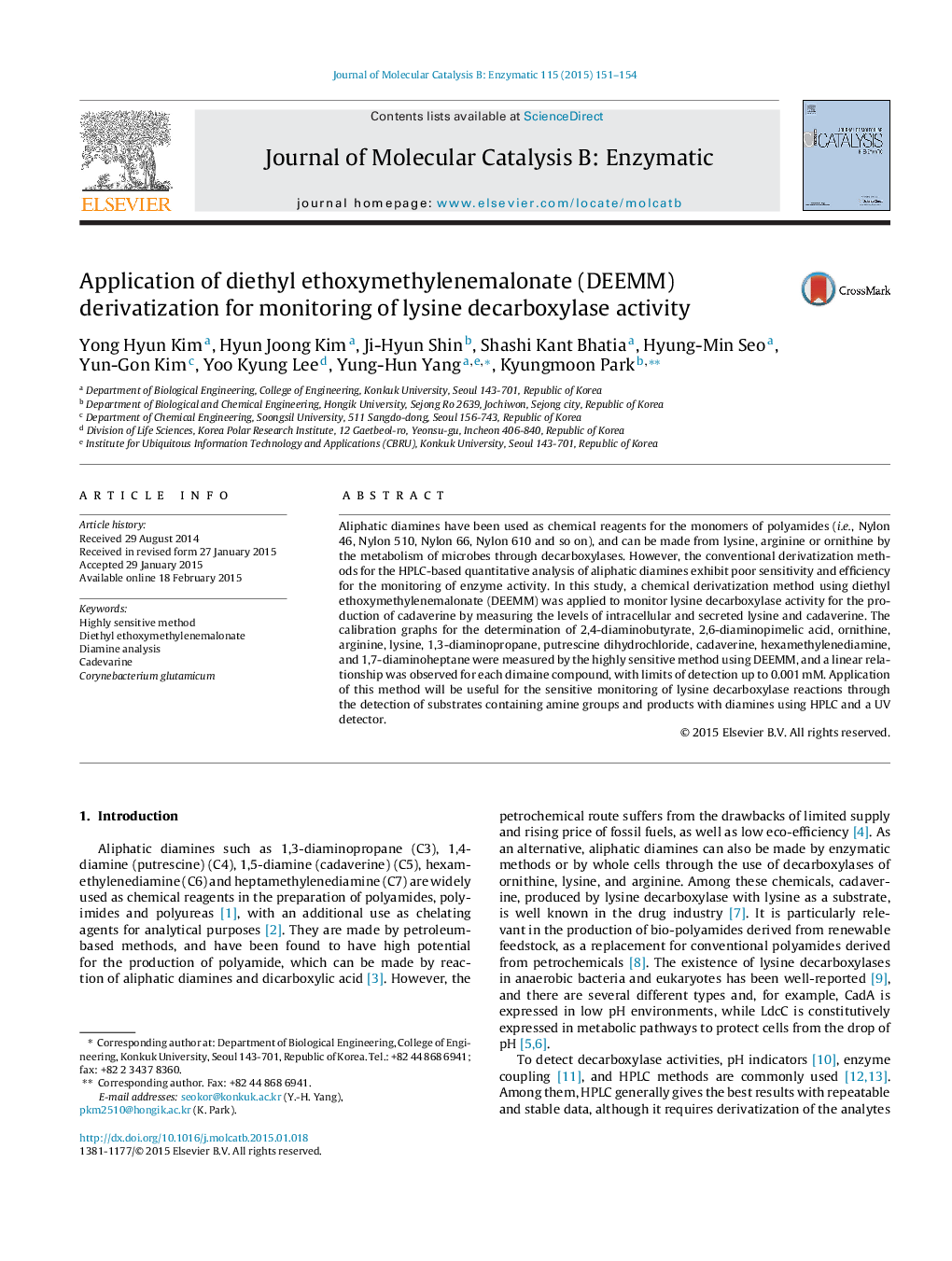| Article ID | Journal | Published Year | Pages | File Type |
|---|---|---|---|---|
| 69565 | Journal of Molecular Catalysis B: Enzymatic | 2015 | 4 Pages |
•DEEMM was firstly used to monitor lysine decarboxylase activity.•DEEMM derivatization showed much higher sensitivity than OPA by 10–100 fold.•DEEMM can be applied to detect monoamines and diamines from various sources.
Aliphatic diamines have been used as chemical reagents for the monomers of polyamides (i.e., Nylon 46, Nylon 510, Nylon 66, Nylon 610 and so on), and can be made from lysine, arginine or ornithine by the metabolism of microbes through decarboxylases. However, the conventional derivatization methods for the HPLC-based quantitative analysis of aliphatic diamines exhibit poor sensitivity and efficiency for the monitoring of enzyme activity. In this study, a chemical derivatization method using diethyl ethoxymethylenemalonate (DEEMM) was applied to monitor lysine decarboxylase activity for the production of cadaverine by measuring the levels of intracellular and secreted lysine and cadaverine. The calibration graphs for the determination of 2,4-diaminobutyrate, 2,6-diaminopimelic acid, ornithine, arginine, lysine, 1,3-diaminopropane, putrescine dihydrochloride, cadaverine, hexamethylenediamine, and 1,7-diaminoheptane were measured by the highly sensitive method using DEEMM, and a linear relationship was observed for each dimaine compound, with limits of detection up to 0.001 mM. Application of this method will be useful for the sensitive monitoring of lysine decarboxylase reactions through the detection of substrates containing amine groups and products with diamines using HPLC and a UV detector.
Graphical abstractFigure optionsDownload full-size imageDownload as PowerPoint slide
